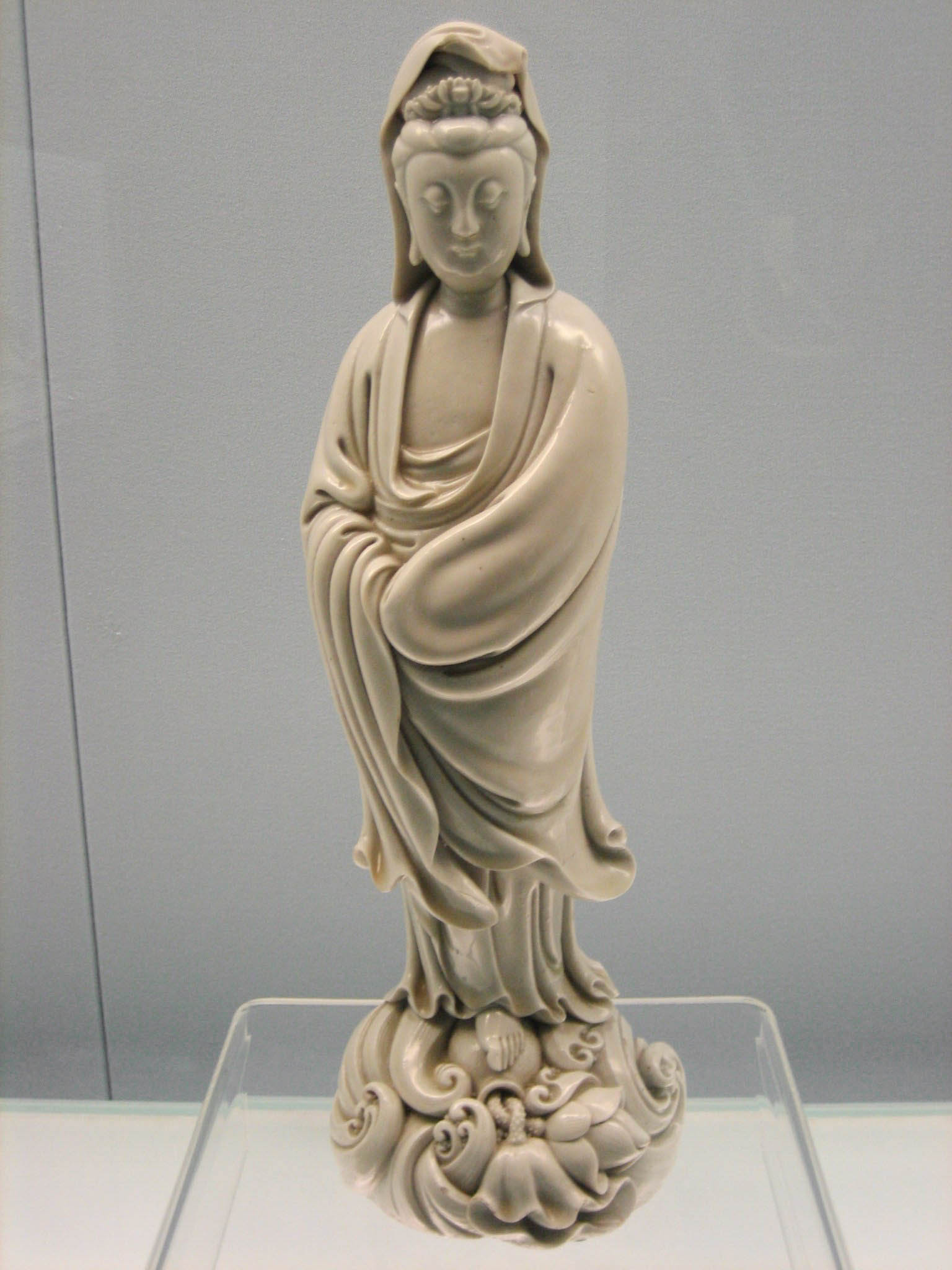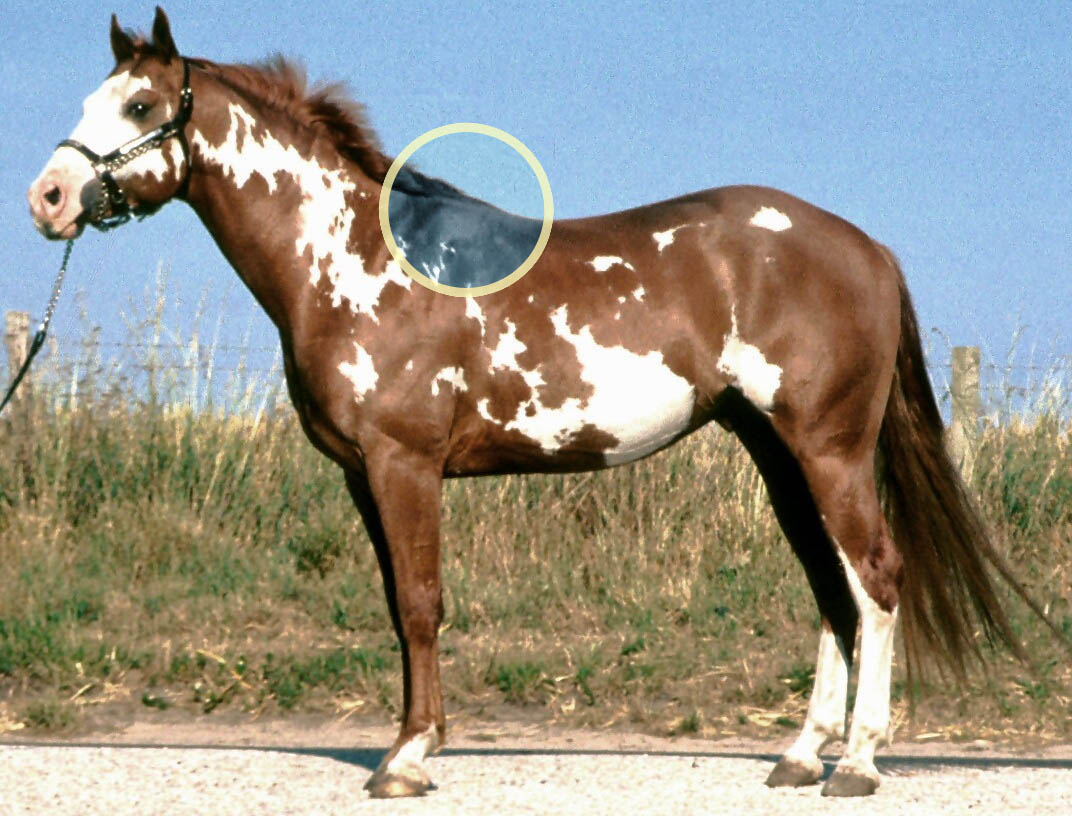|
Porcelaine
The Porcelaine is a French breed of dog of scent hound type. It was formerly also known as the Briquet Franc-Comtois after the historical Franche-Comté region of Burgundy, in eastern France. History The Porcelaine is thought to be a descendant of the English Harrier, some of the smaller Laufhounds of Switzerland, and the now-extinct Montaimboeuf. There have been records of the breed in France since 1845 and in Switzerland since 1880. The breed actually disappeared after the French Revolution (1789–99) but has been reconstructed. Characteristics The Porcelaine gets its name from its shiny coat, said to make it resemble a porcelain statuette. The fur is white, sometimes with orange spots, often on the ears. The skin should be white with black mottling that is visible through the white coat. The fur is incredibly short and very fine. The nose of a Porcelaine dog is black with very wide nostrils. It also has black eyes and long ears that droop down. The neck is long an ... [...More Info...] [...Related Items...] OR: [Wikipedia] [Google] [Baidu] |
List Of Dog Breeds
This list of dog breeds includes both Neontology#Extant taxa versus extinct taxa, extant and extinct dog breeds, Designer breed, varieties and dog type, types. A research article on dog genomics published in Science/AAAS defines modern dog breeds as "a recent invention defined by conformation to a physical ideal and purity of lineage". According to BigThink, over 40% of the world's dog breeds come from the United Kingdom, France and Germany. It states: "Great Britain and France are the ground zero of dog fancying, with 57 registered breeds each. Germany is not far behind, with 47 breeds. These three countries alone represent more than 40% of all dog breeds recognized by the Fédération Cynologique Internationale." Extant breeds, varieties and types A–C D–K L–R S–Z Extinct and critically endangered breeds, varieties and types See also * Dog type * List of dog crossbreeds * List of Italian dog breeds * List of dog breeds from India * List of Tibetan d ... [...More Info...] [...Related Items...] OR: [Wikipedia] [Google] [Baidu] |
Scent Hound
Canton_of_Bern.html" ;"title="Franz Rudolf Frisching in the uniform of an officer of the Canton of Bern">Bernese Huntsmen Corps with his Berner Laufhund, painted by Jean Preudhomme in 1785 Scent hounds (or scenthounds) are a Dog type, type of hound that primarily hunts by scent rather than visual perception, sight. These Dog breed, breeds are hunting dogs and are generally regarded as having some of the most sensitive noses among dogs. Scent hounds specialize in following scent or smells. Most of them tend to have long, drooping ears and large nasal cavities to enhance smell sensitivity. They need to have relatively high endurance to be able to keep track of scent over long distances and rough terrain. It is believed that they were first bred by the Celts by crossbreeding mastiff-type dogs with sighthounds. The first established scent hounds were St. Hubert Hounds (the ancestor of today's bloodhounds) bred by monks in Belgium during the Middle Ages. Description Hounds are ... [...More Info...] [...Related Items...] OR: [Wikipedia] [Google] [Baidu] |
Société Centrale Canine
The Société centrale canine (), officially the Société Centrale Canine pour l'Amélioration des Races de Chiens en France and abbreviated SCC, is a French kennel club founded in 1881. It is made up of regional clubs and breed clubs, and coordinates and regulates activities and connections between governmental groups and dog clubs, as well as activities through the Fédération cynologique internationale, where it was one of the original five founding member organizations in 1911. History The SCC was founded in 1881, to sponsor dog shows in France as The Kennel Club was doing in England. In 1885, the Book of French Origin (''Livre des origines français'', L.O.F.) for the preservation of native dog breeds was begun through the SCC. In 1957, the French Ministry of Agriculture recognised the L.O.F. with other animal records, and it became the official French listing for purebred dogs. Today, all purebred dogs are listed in this register, subject to checking and restrictions. T ... [...More Info...] [...Related Items...] OR: [Wikipedia] [Google] [Baidu] |
Franche-Comté
Franche-Comté (, ; ; Frainc-Comtou dialect, Frainc-Comtou: ''Fraintche-Comtè''; ; also ; ; all ) is a cultural and Provinces of France, historical region of eastern France. It is composed of the modern departments of France, departments of Doubs (department), Doubs, Jura (department), Jura, Haute-Saône and the Territoire de Belfort. In 2021, its population was 1,179,601. From 1956 to 2015, the Franche-Comté was a Regions of France, French administrative region. Since 1 January 2016, it has been part of the new region Bourgogne-Franche-Comté. The region is named after the ' (Free County of Burgundy), definitively separated from the region of Burgundy proper in the fifteenth century. In 2016, these two-halves of the historic Kingdom of Burgundy were reunited, as the region of Bourgogne-Franche-Comté. It is also the 6th biggest region in France. The name "Franche-Comté" is feminine because the word "comté" in the past was generally feminine, although today it is masculine. ... [...More Info...] [...Related Items...] OR: [Wikipedia] [Google] [Baidu] |
Burgundy
Burgundy ( ; ; Burgundian: ''Bregogne'') is a historical territory and former administrative region and province of east-central France. The province was once home to the Dukes of Burgundy from the early 11th until the late 15th century. The capital, Dijon, was wealthy and powerful, being a major European centre of art and science, and of Western Monasticism. In early Modern Europe, Burgundy was a focal point of courtly culture that set the fashion for European royal houses and their court. The Duchy of Burgundy was a key in the transformation of the Middle Ages towards early modern Europe. Upon the 9th-century partitions of the Kingdom of Burgundy, the lands and remnants partitioned to the Kingdom of France were reduced to a ducal rank by King Robert II of France in 1004. The House of Burgundy, a cadet branch of the House of Capet, ruled over a territory that roughly conformed to the borders and territories of the modern administrative region of Burgundy. Upon the exti ... [...More Info...] [...Related Items...] OR: [Wikipedia] [Google] [Baidu] |
France
France, officially the French Republic, is a country located primarily in Western Europe. Overseas France, Its overseas regions and territories include French Guiana in South America, Saint Pierre and Miquelon in the Atlantic Ocean#North Atlantic, North Atlantic, the French West Indies, and List of islands of France, many islands in Oceania and the Indian Ocean, giving it Exclusive economic zone of France, one of the largest discontiguous exclusive economic zones in the world. Metropolitan France shares borders with Belgium and Luxembourg to the north; Germany to the northeast; Switzerland to the east; Italy and Monaco to the southeast; Andorra and Spain to the south; and a maritime border with the United Kingdom to the northwest. Its metropolitan area extends from the Rhine to the Atlantic Ocean and from the Mediterranean Sea to the English Channel and the North Sea. Its Regions of France, eighteen integral regions—five of which are overseas—span a combined area of and hav ... [...More Info...] [...Related Items...] OR: [Wikipedia] [Google] [Baidu] |
Switzerland
Switzerland, officially the Swiss Confederation, is a landlocked country located in west-central Europe. It is bordered by Italy to the south, France to the west, Germany to the north, and Austria and Liechtenstein to the east. Switzerland is geographically divided among the Swiss Plateau, the Swiss Alps, Alps and the Jura Mountains, Jura; the Alps occupy the greater part of the territory, whereas most of the country's Demographics of Switzerland, 9 million people are concentrated on the plateau, which hosts List of cities in Switzerland, its largest cities and economic centres, including Zurich, Geneva, and Lausanne. Switzerland is a federal republic composed of Cantons of Switzerland, 26 cantons, with federal authorities based in Bern. It has four main linguistic and cultural regions: German, French, Italian and Romansh language, Romansh. Although most Swiss are German-speaking, national identity is fairly cohesive, being rooted in a common historical background, shared ... [...More Info...] [...Related Items...] OR: [Wikipedia] [Google] [Baidu] |
Statuette
A figurine (a diminutive form of the word ''figure'') or statuette is a small, three-dimensional sculpture that represents a human, deity or animal, or, in practice, a pair or small group of them. Figurines have been made in many media, with clay, metal, wood, glass, and today plastic or resin the most significant. Ceramic figurines not made of porcelain are called terracottas in historical contexts. Figures with movable parts, allowing limbs to be posed, are more likely to be called dolls, mannequins, or action figures; or robots or automata, if they can move on their own. Figurines and miniatures are sometimes used in board games, such as chess, and tabletop role playing games. The main difference between a figurine and a statue is size. There is no agreed limit, but typically objects are called "figurines" up to a height of perhaps , though most types are less than high. Prehistory In China, there are extant Neolithic figurines. European prehistoric figurines of wome ... [...More Info...] [...Related Items...] OR: [Wikipedia] [Google] [Baidu] |
Withers
Withers are the ridge between the shoulder blades of an animal, typically a quadruped. In many species, this ridge is the tallest point of the body. In horses and dogs, it is the standard place to measure the animal's height. In contrast, cattle are often measured to the top of the hips. The term (pronounced ) derives from Old English ''wither'' ("against'), because the withers are the part of a Working_animal#Draft_animals , draft animal that pushes against a Mechanical load, load. Horses The withers in horses are formed by the dorsal spinal processes of roughly the 3rd through 11th thoracic vertebrae, which are unusually long in this area. Most horses have 18 thoracic vertebrae. The processes at the withers can be more than long. Since they do not move relative to the ground as the horse's head does, the withers are used as the measuring point for the height of a horse. Horses are sometimes measured in hand (unit), hands – one hand is . Horse heights are extremely ... [...More Info...] [...Related Items...] OR: [Wikipedia] [Google] [Baidu] |


